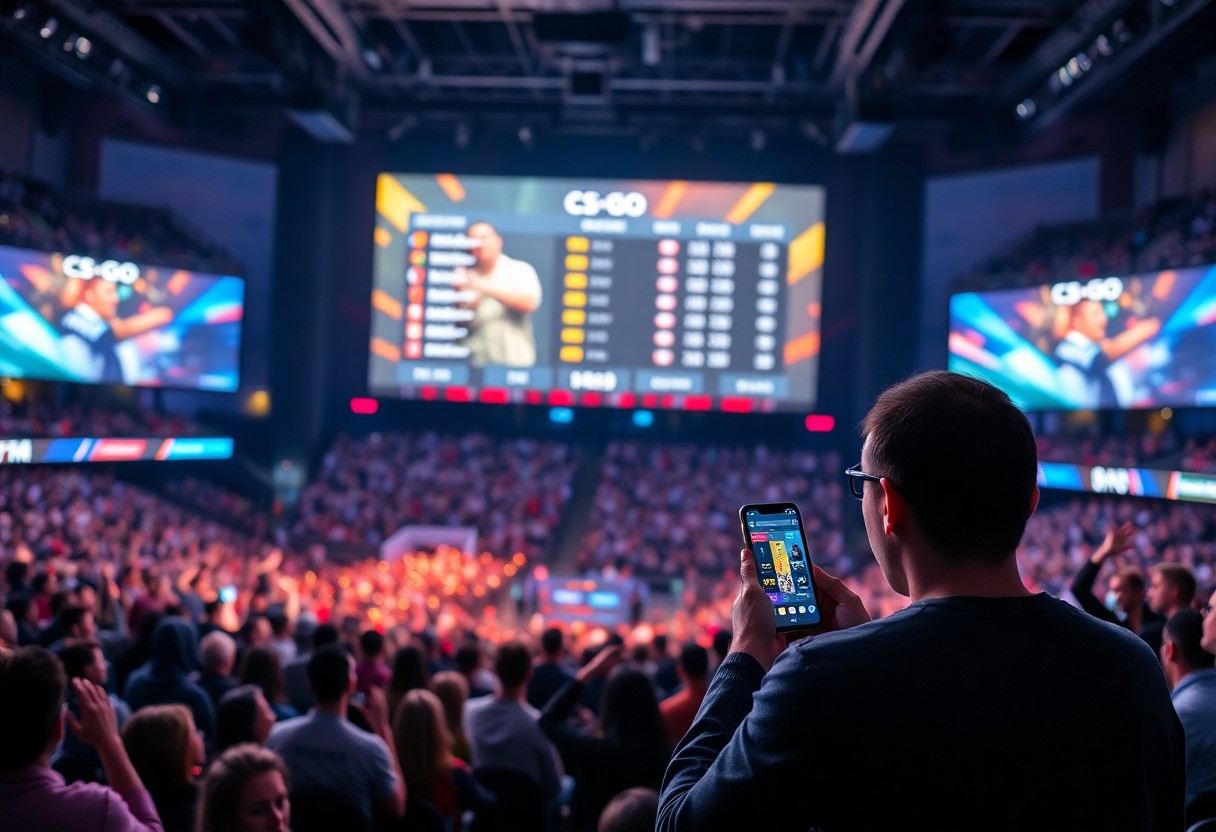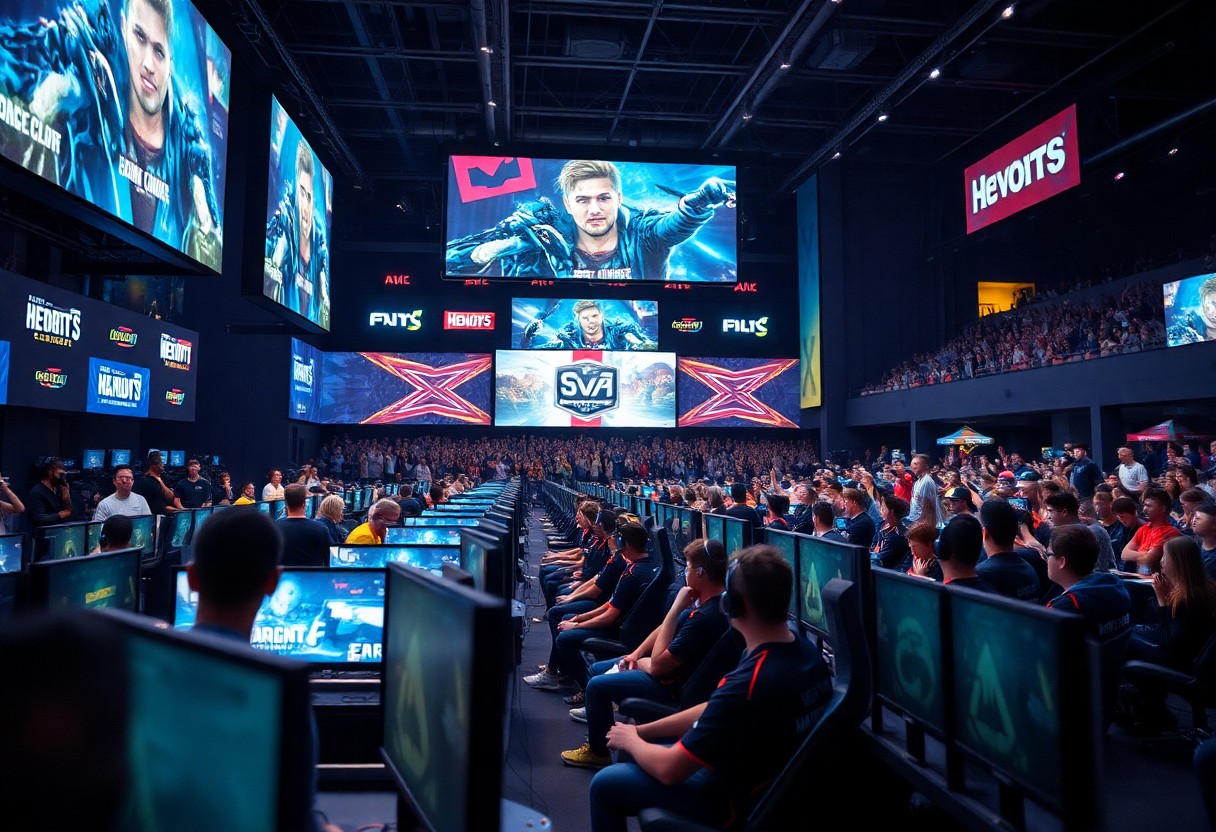There’s a complex relationship between game publishers and the esports ecosystem that shapes everything from tournament structures to player opportunities. Publishers exert a significant influence over the competitive landscape through control of intellectual property, event organization, and financial support. This post explores the multifaceted ways in which these entities manage and direct the flow of the esports industry, examining their role in establishing rules, promoting games, and enriching the overall gaming experience for players and fans alike.
The Role of Game Publishers in Esports
Before the birth of competitive gaming, game publishers were primarily focused on developing and distributing games for casual play. However, as esports evolved into a global phenomenon, these entities took on a central role in shaping the competitive landscape. Not only do publishers provide the platforms and infrastructure for games to be played at a professional level, but they also influence the rules, formats, and narratives surrounding competitive play. This shift highlights a profound transformation in how publishers view their engagement with players and communities, transitioning from mere providers to active stakeholders in the ecosystem.
Defining Game Publishers’ Influence
Between the realms of game development and the esports scene, game publishers wield significant influence that directly impacts tournaments, teams, and player experiences. By controlling the intellectual property of their games, publishers dictate how titles can be marketed, monetized, and legally played in competitive settings. This power extends beyond merely launching titles; it encompasses setting standards for gameplay, establishing official leagues, and regulating cheating and other forms of misconduct. As a result, the publishers shape not just the structural integrity of the competitions, but also the culture that surrounds professional gaming.
Key Players in the Esports Ecosystem
Influence in the esports ecosystem is multi-faceted, with various parties playing distinct roles that collectively drive the industry forward. Game publishers are at the forefront, functioning as both gatekeepers and facilitators. They partner with tournament organizers, sponsors, and streaming platforms to optimize exposure and engagement, ensuring a tightly-knit network that fosters growth. As they invest in the ecosystem, their decisions regarding league operations, tournament structures, and team support can make or break careers, further emphasizing their role as powerful entities within the space.
At the same time, the interdependence among stakeholders in the esports scene—such as teams, players, sponsors, and media outlets—underscores the dynamic nature of this industry. While publishers set the stage, players and teams bring the action, and sponsors supply the necessary funding to sustain competitive events. With each party relying on the others for success, the balance of power often shifts, creating an evolving landscape where the influence of game publishers must be acknowledged as crucial to the ecosystem’s overall health and longevity.
Monetization Strategies
It is clear that the financial landscape of esports is heavily influenced by the various monetization strategies employed by game publishers. These strategies not only serve to generate revenue but also shape the ecosystem of competitive gaming, affecting everything from player salaries to tournament funding. The ability of publishers to effectively monetize their esports titles determines the sustainability of professional gaming leagues and events, reinforcing their control over the market dynamics and player incentives.
Sponsorships and Advertising
After establishing a solid player base and operational framework, game publishers often turn to sponsorships and advertising as a primary source of income. This involves collaborating with brands that seek to reach the engaging and diverse audience that esports provides. Sponsorships can manifest in various forms, from company logos displayed during live streams to sponsored tournaments where brands not only gain visibility but also align themselves with the rapidly growing esports culture. Such partnerships can significantly enhance the financial viability of gaming events but simultaneously mean that publishers dictate which brands integrate into the esports narrative.
Merchandise and In-Game Purchases
With the rise of dedicated fan bases, merchandise and in-game purchases have become key components of monetization strategies in esports. Game publishers capitalize on player loyalty by creating a variety of merchandise, from branded apparel to collectibles, which fans are willing to buy. Furthermore, in-game purchases, ranging from cosmetic items to battle passes, generate ongoing revenue streams that are often tied to esports events, thus creating a direct link between the competitive scene and consumer spending.
Another layer to this is the incorporation of exclusive in-game content tied to specific esports events. Publishers frequently release limited-time skins or items that celebrate major tournaments, incentivizing fans to make purchases that enhance their gaming experience while also supporting their favorite teams or players. This approach not only boosts revenue but also fosters a sense of community and fan engagement, reinforcing the idea that supporting esports extends beyond mere spectating to an active participation in the culture through financial contributions.
Regulation and Governance of Esports
If game publishers wield a significant influence over the world of esports, much of this power is exercised through regulatory frameworks and governance structures. By establishing rules and guidelines, they can shape the competitive landscape of their titles, effectively determining how tournaments are organized, how players may conduct themselves, and even how teams can interact within the ecosystem. This level of control enables publishers to maintain a coherent vision for their games while ensuring that competitions remain appealing to both players and viewers alike.
Setting the Rules
Before a tournament can take place, there are vital regulations that need to be set in stone. Game publishers are responsible for creating a comprehensive rulebook that governs aspects such as match procedures, player eligibility, and code of conduct. These rules are not simply suggestions; they establish a framework to ensure fair competition, protect the integrity of the game, and enhance the player experience. By controlling the rules, publishers can both promote strategic play and discourage exploits that could diminish the competitive value of their titles.
Managing Disputes and Fair Play
Managing disputes among players, teams, and tournament organizers is another significant aspect of governance in esports. Publishers often implement systems for reporting infractions, investigating claims of unfair play, and determining appropriate penalties. This process not only ensures that players are held accountable for their actions but also fosters a sense of trust and confidence in the community. By prioritizing fair play, publishers can create an environment where competition thrives, and the integrity of esports is maintained.
Another vital component of managing disputes is the establishment of dedicated adjudication bodies or committees tasked with overseeing conflicts that arise in competitive settings. These bodies often include industry experts and seasoned players who can provide an impartial perspective on issues ranging from player misconduct to technical glitches in the game. With clear protocols in place, the governance structure becomes more robust, fostering a culture of respect and professionalism in the rapidly evolving landscape of esports. This not only benefits the competitive scene but can also enhance the organization’s reputation in the eyes of the community and sponsors alike.
Event Organization and Control
For many in the esports industry, the event organization plays a pivotal role in shaping the competitive landscape. Publishers have considerable influence over how tournaments and leagues are structured, often dictating the rules, prize pools, and formats. This level of control not only standardizes the competition but also aligns it with their business objectives. By establishing their own tournaments, or by heavily influencing third-party events, publishers can promote their games while ensuring that their visions of gameplay, community engagement, and broadcasting standards are met.
Major Tournaments and Leagues
Organization of major tournaments and leagues is typically managed directly by the game publishers or through partnerships with established esports organizations. These tournaments often feature substantial prize pools and significant media coverage, making them highly coveted by players and fans alike. The publishers decide the timing of these events, the distribution of slots for teams, and the overall tournament format, which can either favor certain play styles or strategies, reflecting the publisher’s intent regarding how their game should be perceived and enjoyed.
Impact on Esports Communities
Along with orchestrating tournaments, publishers wield considerable power over the surrounding esports communities. They foster engagement through community-driven initiatives, streamlining pathways for amateur players to ascend into professional ranks. However, this control can lead to challenges regarding community input and influence. By tightly managing how their games are experienced and played at competitive levels, publishers can sometimes overlook grassroots movements or local tournaments that foster unique fan interactions.
Impact on esports communities can result in feelings of disconnect between the publishers and the players. While publishers aim for consistency and professionalism, this can sometimes overshadow the organic and varied experiences that local tournaments provide. As communities strive to carve their own identities and narratives within the vast esports ecosystem, the tension between corporate control and grassroots engagement remains a compelling issue, influencing everything from player satisfaction to community longevity.
Developing Competitive Games
Unlike traditional video games, competitive games require a tailored approach to development that prioritizes balance, competitiveness, and player engagement. Game publishers play a significant role in shaping these titles to ensure they can withstand scrutiny from the esports community. This includes not only creating an engaging gameplay experience but also monitoring community feedback to adjust gameplay elements that may hinder a game’s longevity. Publishers must consider accessibility for newcomers while ensuring that seasoned players have the tools and mechanics they need to excel, thus fostering healthy competition and player retention.
Balancing and Patching
Below the surface of competitive esports, constant balancing and patching are fundamental components that keep a game vibrant and fair. Game publishers typically employ dedicated teams of developers and analysts who meticulously assess gameplay data to identify underperforming characters, weapons, or strategies. By implementing regular updates, or patches, they can address issues that might disrupt competitive fairness or player satisfaction. This ongoing refinement encourages a dynamic meta-game, where players must continually adapt and strategize, thus enhancing the overall competitive landscape.
Long-term Game Support
Before a game can solidify itself within the esports arena, publishers must also focus on providing long-term support to ensure its viability and growth. This ongoing commitment includes regular content updates, new game modes, and seasonal events that keep the community engaged. Additionally, monitoring the health of the competitive scene through player feedback and community-driven initiatives allows publishers to make well-informed decisions regarding the future of the title. By fostering a sense of investment in both the game and its player base, publishers can nurture a vibrant ecosystem that attracts new competitors and retains seasoned veterans alike.
It is imperative for game publishers to view long-term support as a partnership with the esports community. This means not only delivering updates but also creating platforms for community engagement, such as tournaments and developer panels. By providing a clear roadmap for future developments and encouraging player involvement, publishers can cultivate a loyal player base that feels connected to the game’s ongoing evolution. This structured approach not only helps sustain the competitive scene but can also lead to the discovery of unforeseen trends or gameplay innovations that keep the game fresh and appealing over time.
The Future of Publisher Control in Esports
Once again, the landscape of esports is evolving, raising questions about the extent of control that publishers will maintain over the future of competitive gaming. As more games venture into the esports arena, publishers are exploring new models of engagement, which can redefine player interactions, content creation, and tournament organization. This evolving approach may lead to a greater emphasis on vertical integration, where publishers retain exclusive rights over all aspects of their games, from sponsorship deals to tournament logistics, shaping how esports ecosystems develop moving forward.
As we look ahead, it’s crucial to discern how the balance between publisher control and community-driven initiatives will play out. The competitive environment can either thrive under publisher guidance or suffer from excessive top-down regulations. This delicate balance will ultimately determine whether esports can retain its grassroots roots or become increasingly corporatized—and how players, teams, and fans will adapt to these changes.
Trends and Innovations
An analysis of recent trends in the esports sector indicates a motion toward increased interactivity and integration, where publishers experiment with innovative formats and audience engagement strategies. This includes augmented reality, virtual reality integrations, and cross-platform play. Such advancements can create more immersive and dynamic competitions that not only attract viewers but also bolster participation rates. Publishers are keen on harnessing technology to maintain relevancy and cultivate a loyal fanbase, which underscores their ongoing influence in esports.
Furthermore, the advent of blockchain technology is beginning to gain traction within the esports community, allowing for improved transparency in player contracts, sponsorship deals, and prize distributions. This could lead to greater trust and fairness within the system, possibly enabling publishers to adopt more collaborative approaches that benefit all stakeholders involved. However, the ability to leverage these innovations effectively will determine whether publishers can capitalize on these trends while still maintaining their authoritative position in the esports industry.
Potential Challenges and Opportunities
Beside the obvious advantages of publisher control, significant challenges loom on the horizon, particularly in terms of player autonomy and community feedback. As the ecosystem grows, players and teams find themselves navigating a landscape heavily dictated by publisher interests, which can sometimes lead to conflicts of interest or discontent among stakeholders. However, these challenges also present opportunities for publishers to innovate and engage, encouraging active dialogue with the community to foster a more inclusive environment.
Hence, publishers must balance their influence with the need for community engagement, striving to create environments that empower players and support grassroots initiatives. Acknowledging the voice of players not only enhances the competitive integrity of esports but also opens up new avenues for collaboration. By prioritizing transparency and community input, publishers can turn challenges into initiatives that ultimately contribute to the long-term sustainability and growth of the esports ecosystem. The future of the industry depends on how effectively these relationships are managed and the willingness of publishers to adapt to the expectations of players and fans alike.
Final Words
Taking this into account, it is evident that game publishers wield significant influence over the esports landscape. Their control extends from the development of game mechanics and competitive formats to the organization of tournaments and management of player contracts. By establishing guidelines and structures within which esports operates, publishers can shape the ecosystem to align with their own business objectives, such as promoting their game or generating revenue through sponsorships and media rights. This degree of control not only impacts how games are played competitively but also influences the overall growth and sustainability of the esports industry.
Furthermore, as the esports scene continues to evolve, the relationship between game publishers and various stakeholders—including players, teams, and fans—will remain critical. The power dynamics at play can foster collaboration and innovation or create conflicts that may hinder progress. As the industry matures, it will be vital for stakeholders to engage in dialogue, allowing for a more balanced approach that can benefit all parties involved while still respecting the creative and business objectives of game publishers. This ongoing negotiation will ultimately shape the future of esports and its role within the broader gaming community.






